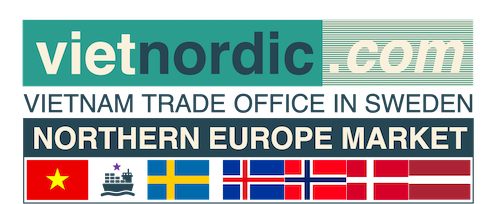Viet Nam is implementing a green growth strategy to fulfil its sustainable growth goals by 2030 and at the same time use resources effectively in the context of the COVID-19 pandemic.
Hà Đăng Sơn, director of the Center for Energy Research and Green Growth, spoke to Viet Nam News Agency about this issue.
What is the role of green growth for Viet Nam’s economy?
Having a national green growth strategy is a great step forward for Viet Nam in harmonising economic development with environmental protection. It is also part of Viet Nam’s efforts to join international organisations in reducing greenhouse gas emissions.
In fact, there are two opposing trends: economic growth and environmental protection. Viet Nam is a developing country and has many urgent goals, such as reducing poverty and becoming a country with stable and sustainable economic development.
On the other hand, economic development will create negative impacts on the environment and change social culture.
Therefore, this strategy will help Viet Nam balance economic development with the protection of the environment and cultural values. It is very important for Viet Nam.
Viet Nam has implemented the green growth strategy between 2012-2020. What has the country achieved from implementing this strategy?
In 2012, Viet Nam issued the first national green growth strategy. This strategy showed the Government’s vision for the main issues of economic and social development along with environmental protection. However, there were still many institutional problems to implement this strategy.
In 2014, the Government issued a national action plan on green growth with a clear roadmap and goals in each phase.
During the 2012-2020 period, Viet Nam mainly built institutions and policies as the basic foundation for the next period. From 2021, Viet Nam will really carry out green growth activities on a large scale.
In the 2014-2020 period, Viet Nam mainly conducted research and assessment on the feasibility of solutions in the green growth strategy and reviewed the legal framework of Viet Nam.
What mechanisms and policies does Viet Nam have to promote green growth?
In the green growth strategy, there are 12 groups of content and 66 different activities with the participation of sectors, localities and socio-political organisations to implement.
Recently, Viet Nam has enhanced the development of mechanisms and policies to promote green growth, such as the promulgation of the Law on Planning and the Law on Public Investment, and amendment of the Law on Investment, the Law on Environmental Protection, and the Law on Environmental Protection, and public-private partnership programmes.
In addition, a series of ministerial-level policies have been issued to promote the implementation of the green growth strategy, including policies to encourage investment in green energy. The Government also has a policy to encourage foreign and private investment in renewable power projects.
One of the current difficulties is mobilising capital for the green growth strategy, especially in the context that Viet Nam is cutting public investment. How should Viet Nam solve this issue?
According to a report of the World Bank and UNDP on assessing the budget for solving climate change and implementing green growth, Viet Nam’s public investment in those fields has accounted for only 0.1 per cent of GDP, so Viet Nam needs to attract investment from the private sector for implementing many activities in the green growth strategy.
Private investment is necessary, especially in the period of digital economy transformation and economic restructuring. However, policy changes related to climate change and green growth have not yet completely created confidence for private investors.
In recent years, Viet Nam has not had a uniform implementation of policies and regulations on mobilising private investment capital from ministries, sectors and localities.
Therefore, the Government needs to have a longer-term vision instead of a term-based policy. For example, the Government needs to have a policy with a long-term commitment of 10-15 years to create confidence for private investors with a long-term investment.
At present, they only invest for 4-5 years in one sector and then move to another due to fear of policy risks.
Viet Nam is developing a national strategy on green growth for the 2021-2030 period with a vision to 2045. In your opinion, what solution should this strategy focus on?
Any policy is related to institutions and coordination between ministries and between Government and localities. This is an issue that needs to be addressed in the next phase.
Besides that, private participation is crucial in implementing this strategy at a larger scale with much higher capital requirements. For example, investment in electricity projects that require large capital and of course, public investment can meet its needs. Therefore, the strategic vision in this period must be clear and the financial mechanism must be more flexible. – VNS

